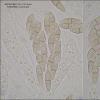
10-09-2013 12:38
Alain BRISSARDBonjour à tousPourcette Scutellinie, je fais enco

09-09-2013 23:27
 Martin Bemmann
Martin Bemmann
Dear Friends,a "lichen-colleague" did send me a dr

10-09-2013 00:28
Esquivel-Rios EduardoHola todos.Este hongo lo encontre en un tronco mue

07-09-2013 17:33
GARCÍA BLANCO AURELIOEstimados amigos. Fotografiada en tronco de Alian

07-09-2013 20:17
 Rubén Martínez-Gil
Rubén Martínez-Gil
Hola a todos.Pongo unas fotos de un asco que enco
Lophiotrema rubi?
Garcia Susana,
10-09-2013 14:10
I've found this ascomycete
Ascomata erumpent, 0.3-0.5 mm diam. Neck prominent (150 x 100 um). Asci 8-spored, clavate with a short stalk. Ascospores upper cells slightly wider than the basal cell, 1-septate , with a thin gelatinous sheath. On wood of Ulmus.
I think this may be Lophiotrema ruby. Is it right?
Thanks in advance
Susana
?
Björn Wergen,
11-09-2013 12:07

Re : Lophiotrema rubi?
Hi Susana,
this is obviously not L. rubi, compare also with funghiparadise.
I think your collection belongs to Trematosphaeria. But I still do not know which species, probably a new one. I have found it three times, see also this:
http://www.ascofrance.com/search_forum/22428?
regards,
björn
this is obviously not L. rubi, compare also with funghiparadise.
I think your collection belongs to Trematosphaeria. But I still do not know which species, probably a new one. I have found it three times, see also this:
http://www.ascofrance.com/search_forum/22428?
regards,
björn


